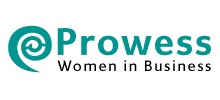Enhancing workplace productivity is not just a goal but a necessity for businesses aiming to thrive. This comprehensive guide is designed to walk you through practical strategies and insights to elevate your productivity at work. Whether you’re a seasoned manager or a budding professional, understanding the nuances of productivity can lead to profound improvements in your work environment and output.
Understanding Your Work Patterns
The first step towards boosting productivity is understanding your own work habits and patterns. Recognise the times of day when you are most energetic and focused. Are you a morning person, or do you find your stride in the afternoon? Tailoring your work schedule around these peak productivity periods can lead to more efficient and effective work.
Setting Clear Objectives
Goal setting is crucial. Start by establishing clear, achievable objectives for your day, week, and month. These should be specific, measurable, achievable, relevant, and time-bound (SMART). By setting these targets, you’re not just working aimlessly; you’re moving with purpose towards a predefined outcome, which can significantly boost your motivation and productivity.
Rewarding Hard Work And Offering Breaks
Reward and regular breaks are essential parts of making sure a workplace can function effectively. If you’re a manager or business owner, make sure that you offer your team regular breaks throughout the day. Despite what you may think, this can actually make employees more focused on their work and help with workload fatigue. It can also be a good idea to offer rewards or incentives for working hard, such as bonuses. Or why not build your team-building event to help boost morale and create a fun day out where everyone can build stronger working relationships? Consider feedback from your team on what they would appreciate as a reward for their hard work and what would help them feel appreciated and supported.
Prioritising Tasks
Once you have your objectives in place, prioritise your tasks. Not all tasks are created equal; some will have a more significant impact on your objectives than others. Learn to differentiate between urgent and important tasks. Utilise tools like the Eisenhower Box to categorise and prioritise your work effectively. This way, you can focus on what truly matters, reducing wasted time and increasing your output.
Embracing Technology
In today’s digital age, leveraging technology can greatly enhance workplace productivity. From project management tools like Asana or Trello to communication platforms such as Slack, these resources can streamline workflows, enhance communication, and keep everyone on the same page. However, it’s essential to choose tools that integrate well with your team’s work style and not become a distraction.
Fostering a Positive Work Environment
The environment in which you work can significantly impact your productivity. A positive, supportive workplace encourages focus and efficiency. Consider aspects like lighting, ergonomic office chairs, and even office layout. Encouraging a culture of open communication and mutual support can also foster a more productive work environment.
Taking Regular Breaks
Ironically, one of the keys to increasing productivity is knowing when to take a break. Continuous work without adequate breaks can lead to burnout and reduced efficiency. The Pomodoro Technique, for instance, suggests working for 25 minutes followed by a 5-minute break. These short breaks can help refresh your mind, allowing you to maintain a high level of productivity throughout the day.
Enhancing Team Collaboration
Productivity is not just an individual pursuit; it’s a team effort. Enhancing collaboration within your team can lead to a more efficient workflow. Regular check-ins, clear communication, and a shared understanding of goals and responsibilities can all contribute to a more cohesive and productive team.
Continuous Learning and Development
The pursuit of productivity is an ongoing journey. The most productive professionals are those who are committed to continuous learning and self-improvement. Stay abreast of new technologies, methodologies, and strategies in your field. Encourage a culture of learning within your team, where new ideas and approaches are shared and implemented.
Personal Well-being
Lastly, never underestimate the importance of personal well-being in the context of productivity. A healthy work-life balance, better sleep, regular exercise, and proper nutrition are all foundational to maintaining high levels of productivity. When you take care of yourself, you’re better equipped to perform at your best.
Conclusion
Boosting workplace productivity is a goal that requires a thoughtful approach. By understanding your work patterns, setting clear objectives, prioritising tasks, embracing technology, fostering a positive work environment, taking regular breaks, enhancing team collaboration, committing to continuous learning, and prioritising personal well-being, you can make significant strides in enhancing your productivity and that of your team. Remember, productivity is not just about doing more in less time; it’s about doing the right things in the right way. With the right strategies and mindset, you can transform your work environment into a hub of efficiency and success.

